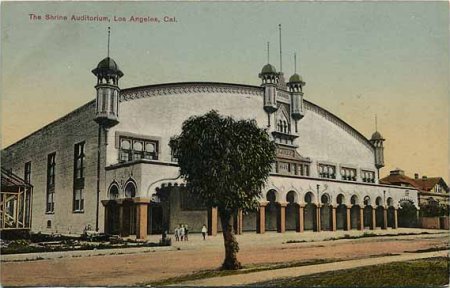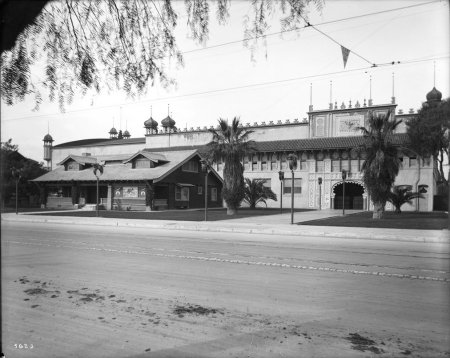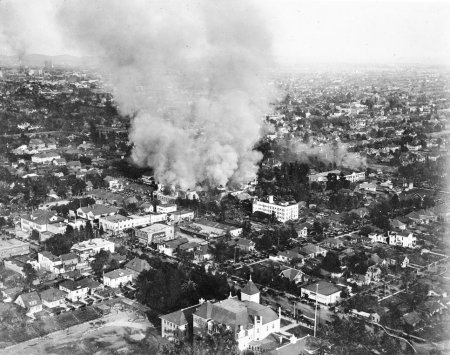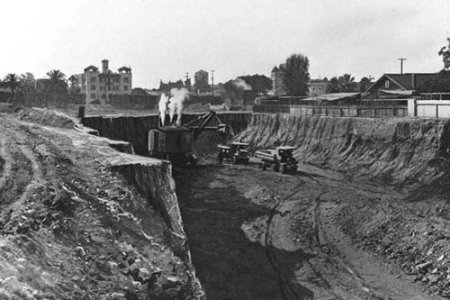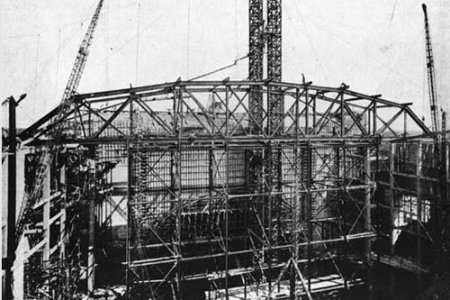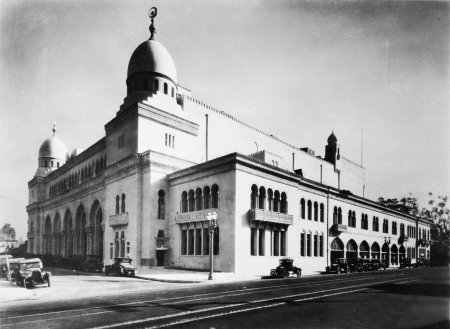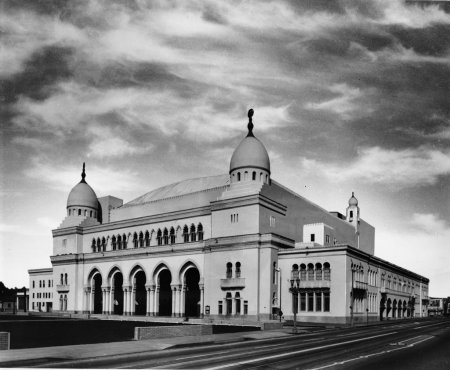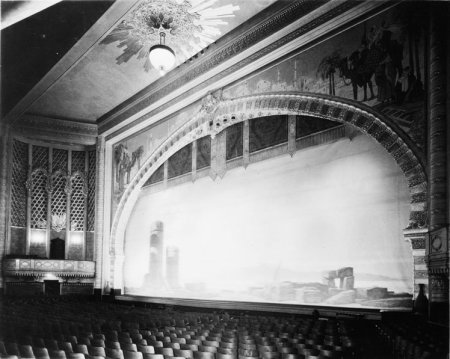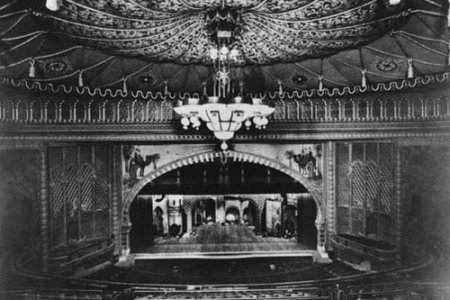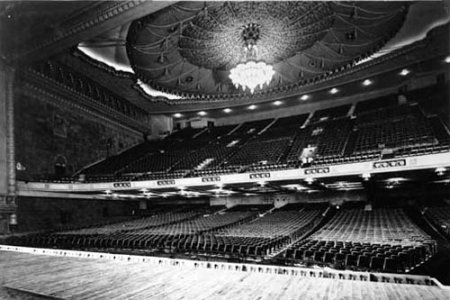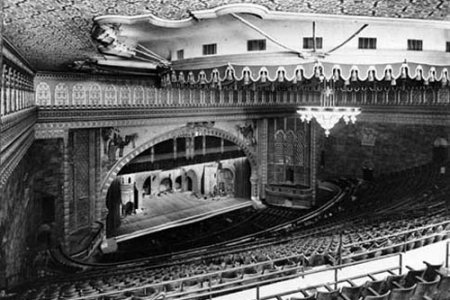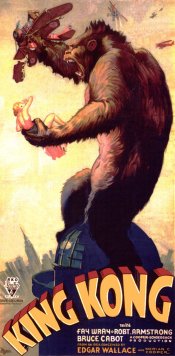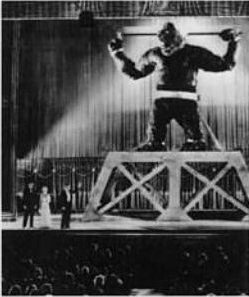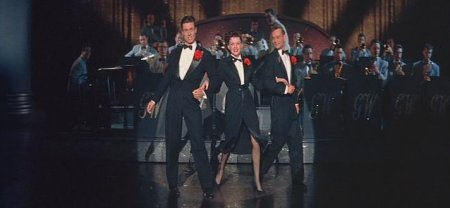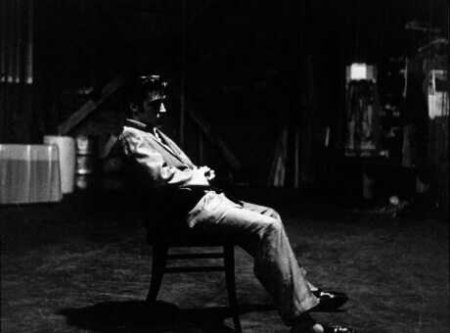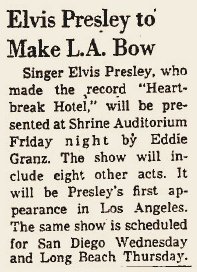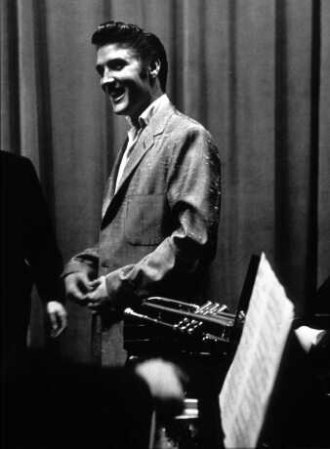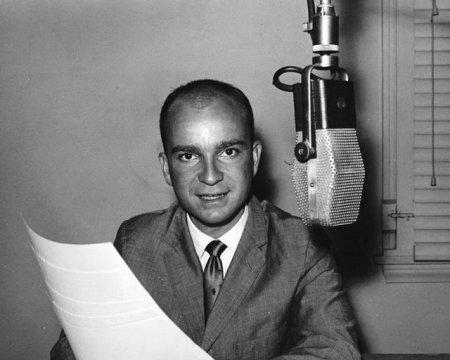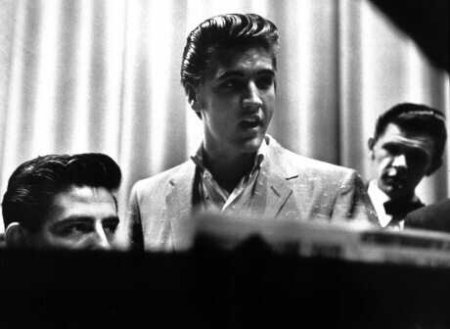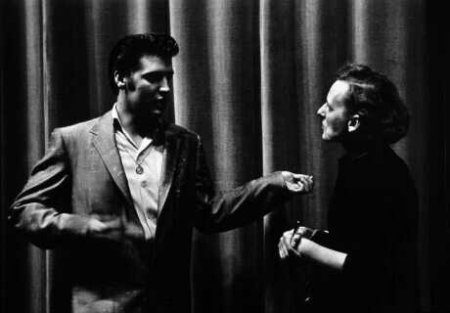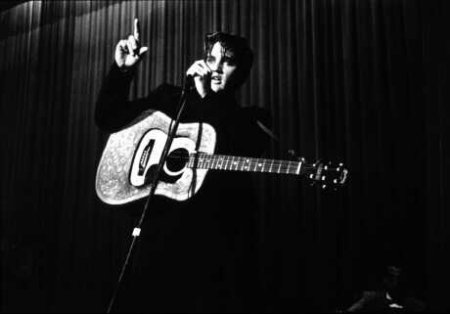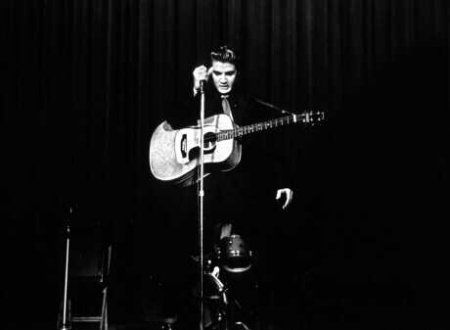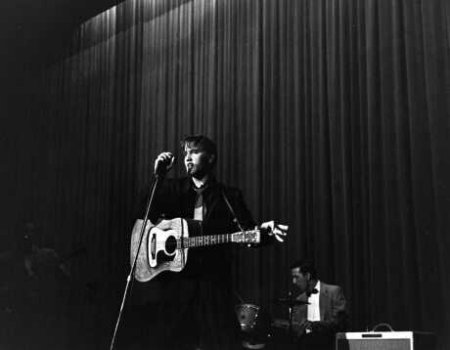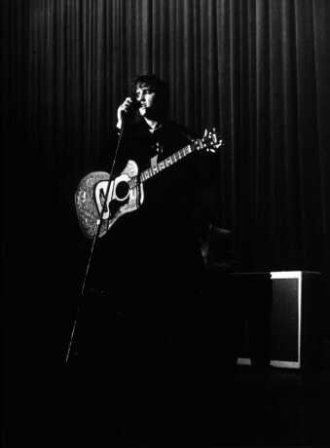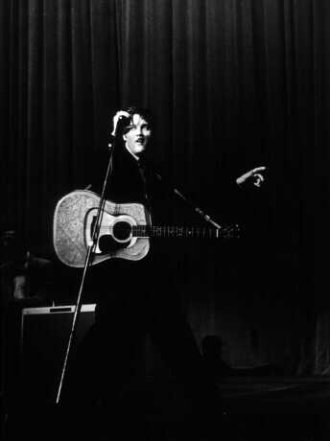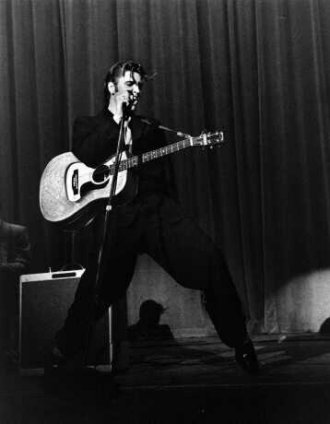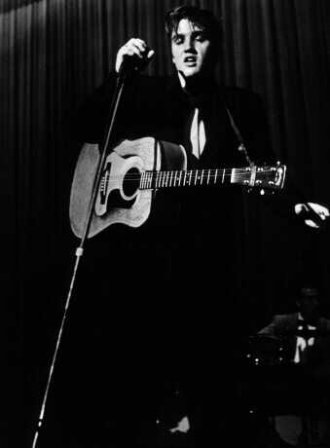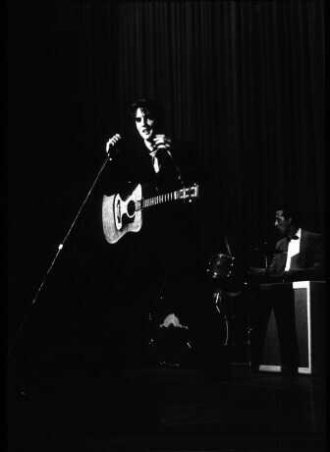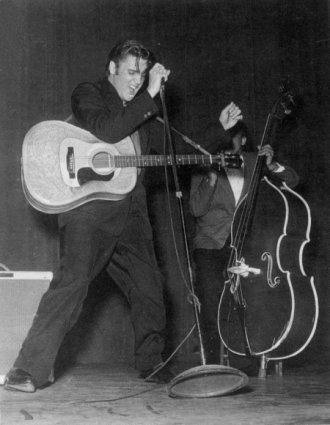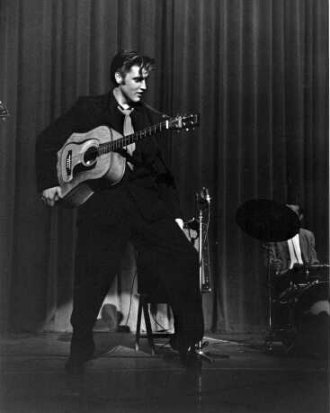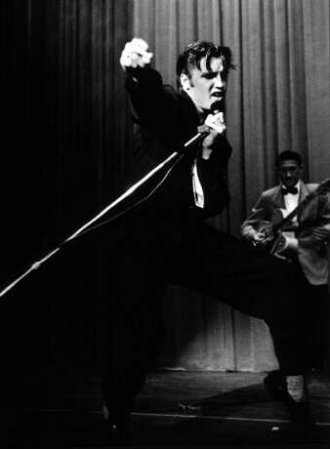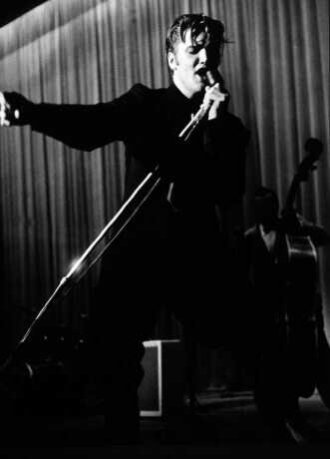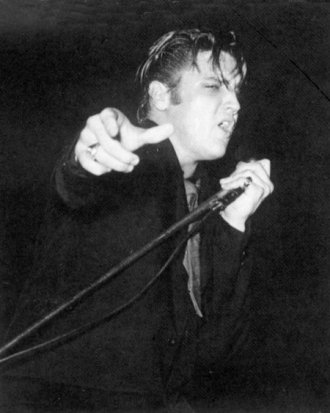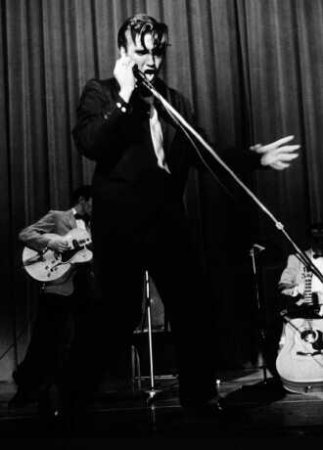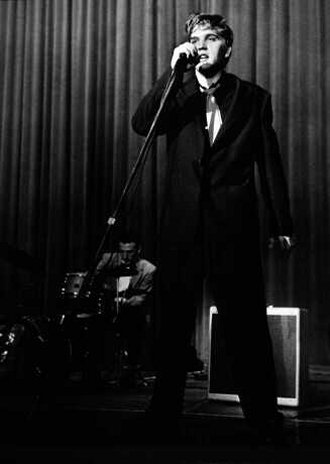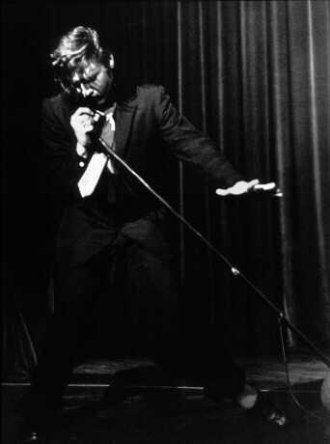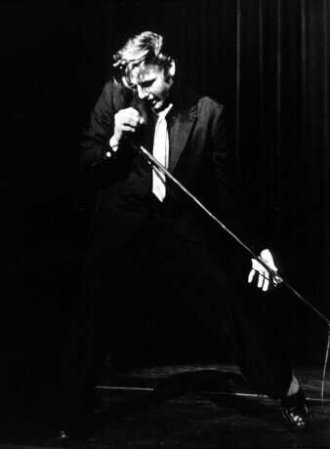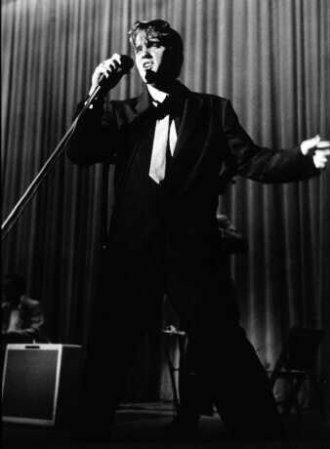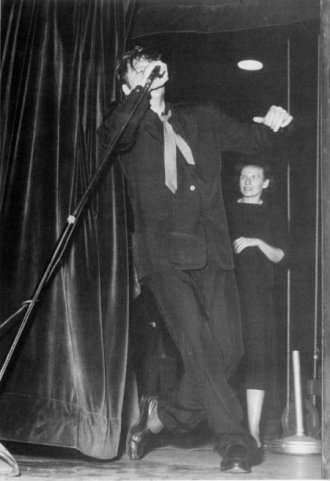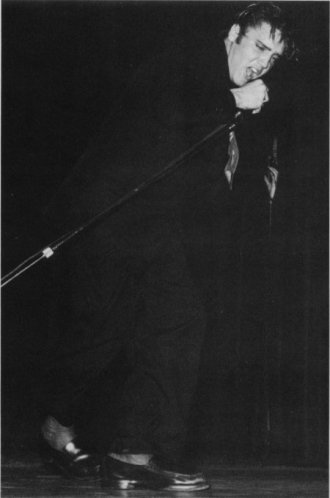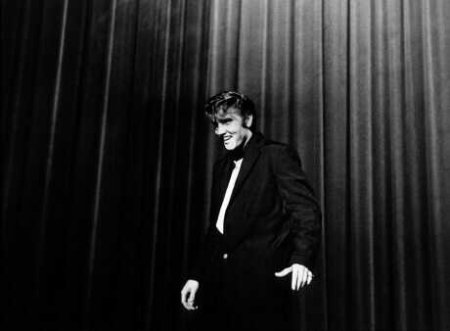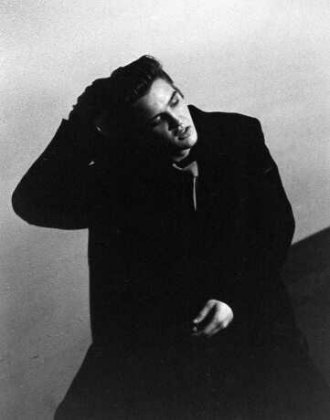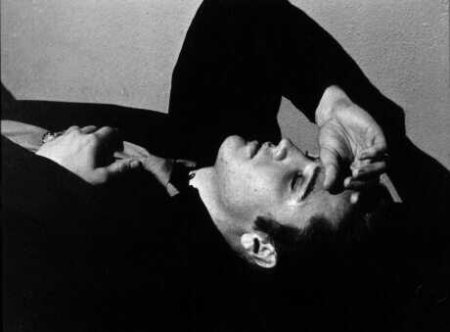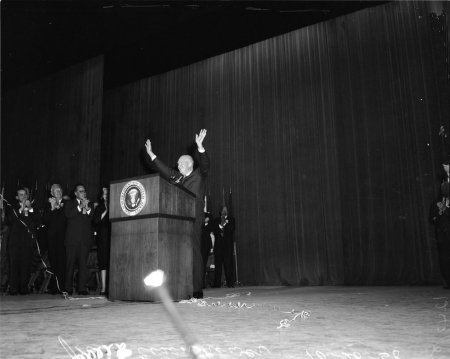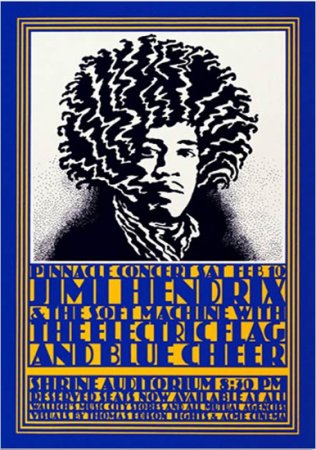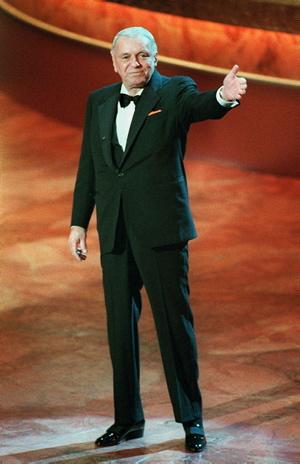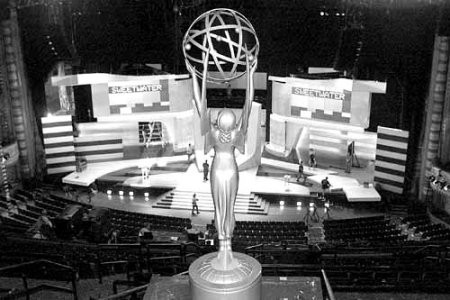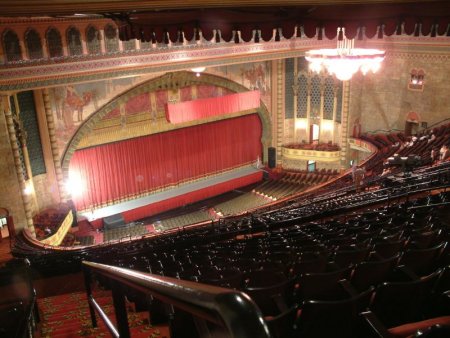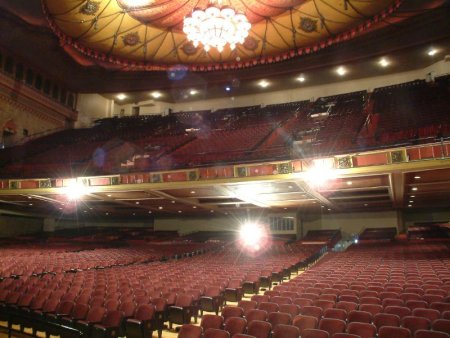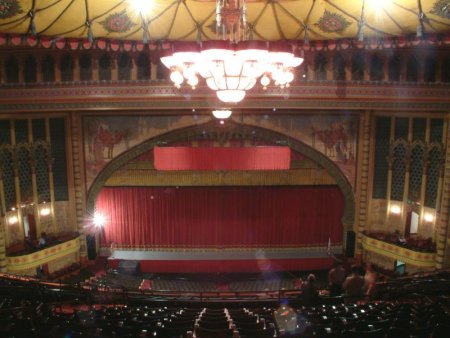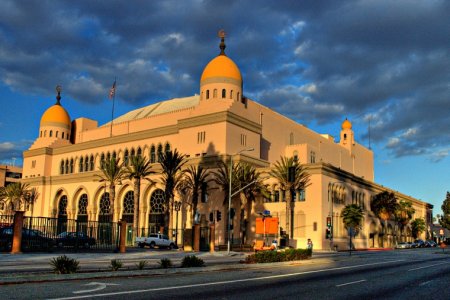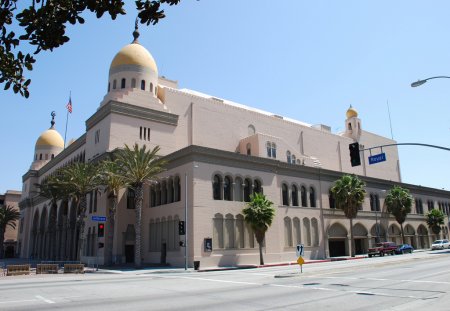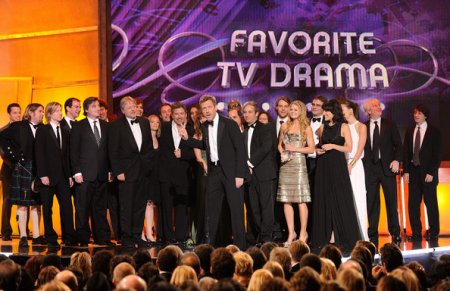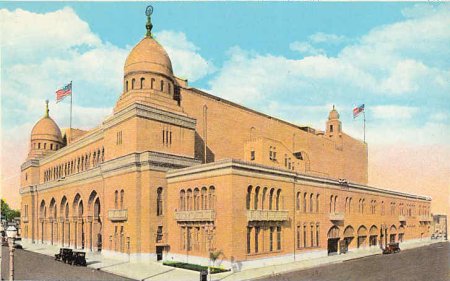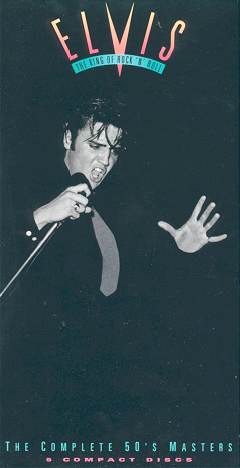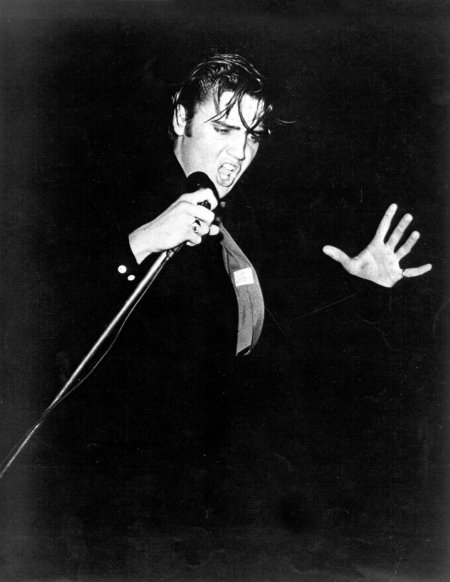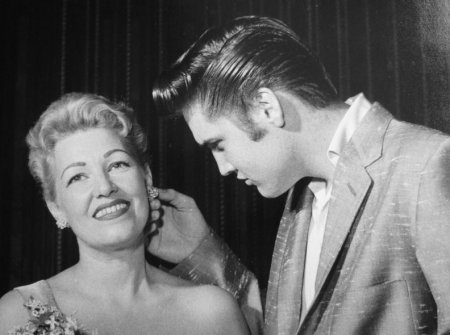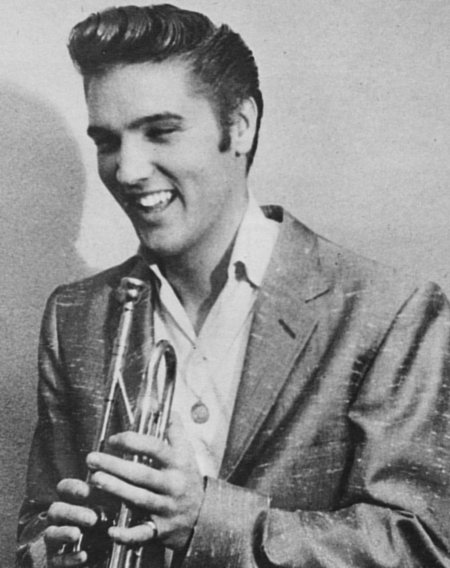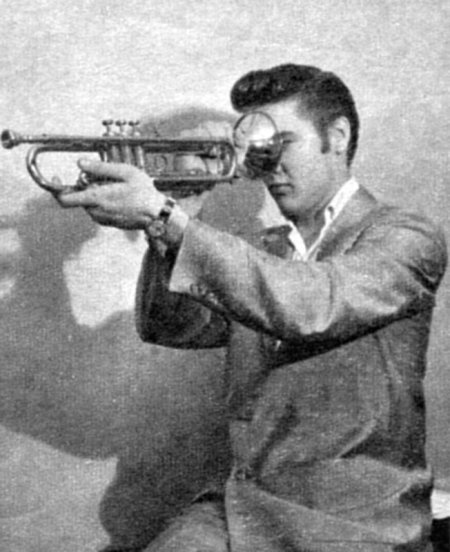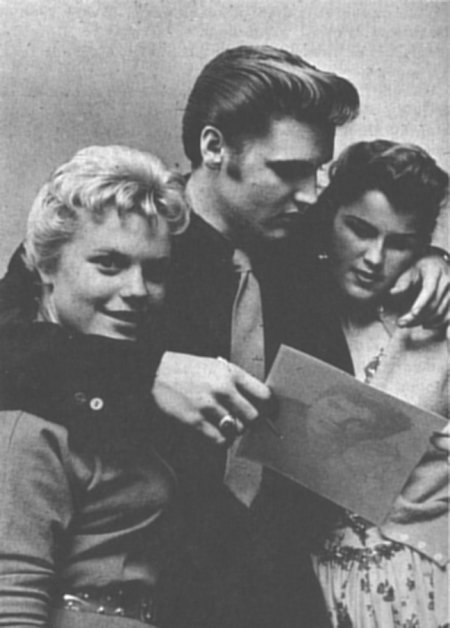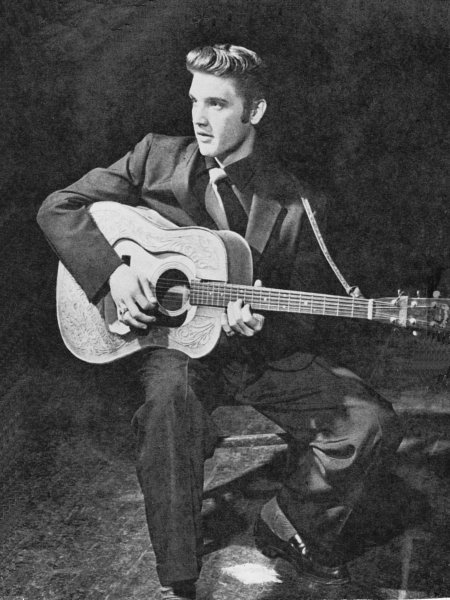 |
Shrine Auditorium
The full name for the Shrine Auditorium is Al Malaikah Shriners Ancients Arabic Order Nobles of Mystic Shrine.1 It is part of the Shrine fraternity that was founded in 1872 as an adjunct of the Masonic fraternity, the oldest and largest fraternal organization in the world. Shriners are a social fraternity committed to fraternal fellowship and the organization sponsors the Shriners Hospitals for Children. The Al Malaikah Shrine was established in 1888 and is one of 191 Shrine Centers with nearly 500,000 Shriners nationwide. The original Shrine Auditorium, at 649 W. Jefferson Blvd. in Los Angeles, was completed in 1906.2
On January 11, 1920, the Auditorium burned to the ground. It took six years of planning and funding before the new Auditorium was completed. Once rebuilt, on the same site of the original Auditorium, the facility was unique among the theater structures because of its size, versatility and unique interior and exterior design.2
The new, $2.5 million, 6,500-seat Shrine Auditorium was designed by architect John C. Austin with a Moorish/Moroccan style. The interior was created by popular theatre designer G. Albert Lansburgh. It opened on January 23, 1926 as the world’s largest theatre with an adjacent ballroom that could hold about 6,000.1
From the outside, the Shrine Auditorium resembles an exotic Arabian mosque from ages past, or some west coast Taj Mahal, replete with white Persian domes and Moorish arches. Inside, it is a lush, old-fashioned opera house, with red velvet seats and tiered balconies overlooking its cavernous interior.3 The Shrine Auditorium comprises the single largest proscenium style stage in North America with a free standing balcony.2
When it opened, as the world's largest theater, the theatre’s crystal chandelier was also heralded as the world’s largest. It weighs four tons, measures twenty feet across, and consists of 500 red, white, blue, and amber bulbs.1 The auditorium's unusual architecture (inside and out) has made it a favorite movie location.2
In 1933 the world saw the Shrine's stage in the RKO Pictures' production of King Kong. Stop-action animator William Harold (Willis) O’Brien is still lauded as creating one of the most spectacular stop-action creatures in film history. The actual stage and theater of the Shrine was used in filming to depict Kong in the story after his capture and presentation to the world at the Broadway Theater in New York.
Inside the theater, a shot of a real audience filmed inside the Shrine Auditorium appears to be split-screened with a miniature curtain, which is then raised via animation to reveal the chained Kong, who is placed on the real Shrine stage via another split screen. The close-up shot of Kong grunting was filmed using the Big Head. The side views of Kong becoming agitated were filmed on the miniature stage and then rear projected behind the actors playing the reporters in the wings. To film the shot of Kong jumping off his platform, the actors playing the reporters were filmed running off into the real wings of the Shrine Auditorium and then rear projected behind the miniature Kong as he drops down into the frame.4 The film won no awards though in later years it was deemed "culturally, historically and aesthetically significant" by the Library of Congress and selected for preservation in the United States National Film Registry. In 1947 a yet to be explained accident reputedly occurred when a secret un-piloted Navy plane smashed into the Shrine's roof near its south west cupola and burned. No one was injured. 1947 was also the year that the Academy Awards ceremony made its debut at the Shrine Auditorium, and back again in 1948.5
Years later, Academy Award winning director George Cukor took advantage of the vast stage and cavernous auditorium for the 1954 remake of A Star is Born featuring Judy Garland. They spent six days shooting scenes at the Shrine taking full advantage of the use of Cinemascope and Technicolor. "It is in the Shrine Auditorium scenes that color really plays its big scene. Nearly 800 extras in the theater are grouped in accordance with the color of the women's evening clothes. We put the women in yellow in one part of the auditorium, those in gray in another. People formed blocks of color which blended into each other without that restless, dispersed look usually seen in crowd scenes... We tested the color of the theater program four separate times before we decided on the final phosphorescent pink." The Shrine's adjacent 54,000 square foot exposition hall proved very advantageous for the shoot as well allowing them to comfortably accommodate several thousand people, dining tables, makeup cubicles, and costume racks; food could be prepared and served from the in-house kitchen.6
Coincidentally, years later, Elvis would be approached to costar with Barbra Streisand in the 1976 remake of A Star is Born, but either on advice from the Colonel or by his own decision he would turn down the role much to the dismay of several of his friends and many of his fans. The role instead would go to Kris Kristofferson.
On June 3, 1956, the same day as Elvis, Scotty, Bill and D.J.'s second appearance on the Milton Berle Show, the L.A. Times ran a small blurb announcing Elvis' first public performance in Los Angeles to be held at the Shrine Auditorium on June 8th in a show presented by Eddie Granz that would include eight other acts. His first appearance in California was two months earlier, in April, in San Diego at the time of his first Milton Berle show appearance which was broadcast from the deck of the U.S.S. Hancock. The appearance at the Shrine, would be preceded by a return appearance to the San Diego Arena and a show in Long Beach at the Municipal Auditorium.
Backstage at the Shrine Auditorium on the 8th, Elvis was interviewed by Lew Irwin. Lew was a newsman for Los Angeles AM radio KPOL from 1955 to 1962. The interview, as transcribed and published by Jerry Osborne in Elvis: Word for Word, went as follows:
Elvis, how does someone like you come out from Tennessee
out here to Hollywood and break into this business the way you have?
How'd the breaks come?
Seemed to snap. .seemed to click?
What happens with rhythm and blues? Is this just a fad? Are
you just a fad? What happens next?
What is rhythm and blues?
How do you explain the controversy over your music?
You’ve probably heard that rock and roll was outlawed just
last week in a northern California city. People have been saying that
it’s contributing to juvenile delinquency. I'm sure you don’t agree with
that.
Overall, how has the reaction been?
Why do you think you didn't go over so well in Las Vegas?
So rock and roll is a music for teenagers, you would say?
It will be accepted, you think, more by older people soon?
How many records have you sold?
All totaled?
Two and one-half million. How do you explain your success? The shows in San Diego and Long Beach were reviewed locally, the former being the typical less than stellar "kids liked it, adults didn't" variety. The Shrine show though, unlike his next L.A. appearance the following year at the Pan-Pacific Auditorium, apparently received no reviews in the L.A. Papers at all. One might wonder if this may have been attributed to the fact that his national appearance on the Milton Berle show earlier in the week had the press and more than a few viewers appalled.
In October of 1958 while campaigning for Republicans in the home State of his Vice President, Richard M. Nixon, California, President Dwight D. Eisenhower delivered a Radio and Television address from the Shrine Auditorium. Nixon's mother, among others was onstage with him. In his speech, among the other accomplishments he attributes to Republicans of that era and administration was "an America at peace." By this time, the days of touring by Elvis, Scotty, Bill and DJ as a band were over. Elvis had been inducted into Eisenhower's peacetime Army and had shipped to Germany almost a month before where he would remain until March of 1960.
The 1960s saw acts at the Shrine such as The Grateful Dead, The Velvet Underground, The Butterfield Blues Band and Sly & the Family Stone. A Jimi Hendrix concert in 1968 was associated with the Pinnacle Production Company, which put on a series of highly-regarded concerts in the L.A. area, primarily at the Shrine Auditorium. This show featured psychedelic visuals projected on huge screens set up on stage behind the band. One video sequence showed a mirror-imaged female – apparently naked – moving tastefully in an Oriental/Indian-style dance routine. According to some sources, while the fans at the show were mesmerized by this imagery, the owners of the auditorium – the Shriners – were somewhat miffed and therefore would not allow any more Pinnacle concerts in the Auditorium. They did, however, allow the Pinnacle folks to put on shows at the exhibition center next door.7 In a freak accident in 1984 Michael Jackson received second degree burns after special effects went wrong and his hair caught fire while filming a commercial for Pepsi Cola on the stage at the Shrine in front of 3,000 of his fans.8 The Shrine Auditorium was added to the National Register of Historic Places in 1987.1
On November 19, 1995 Frank Sinatra made his last televised appearance during the taping of a celebration of his 80th birthday from the Shrine Auditorium. Produced by Dick Clark, "Sinatra: 80 Years My Way," featured a varied mixture of long time and contemporary performers such as Bob Dylan, Little Richard, Ray Charles, Tony Bennet, Natalie Cole, Julio and Enrique Inglesias, Bruce Springsteen, Bono, Reba McEntyre, Garth Brooks, Michael Bolton, Janet Jackson, Puffy Daddy and Matchbox 20 among others, each paying tribute to Frank.
The Academy Awards returned to the Shrine in 1988, 1989, 1991, 1995, 1996, 1997, 1998, 2000 and lastly in 2001. From 1998 through 2007 the Auditorium was home to the 50th through the 59th Annual Emmy Awards show hosted by the Academy of Television Arts and Sciences. Coincidentally, in 2005, Jonathan Rhys Meyers was nominated for an Emmy in the category of Outstanding Lead Actor in Miniseries or a Movie for his portrayal of Elvis in the CBS Miniseries "Elvis."
Over the years, the Shrine Auditorium and Expo Center has also been selected as the West Coast location for the American Music Awards, the MTV Music Awards, BET Awards, the Grammys, Screen Actors Guild Awards, NAACP Image Awards, the Soul Train Music Awards, the American Comedy Awards, and others. And all of this is in addition to the Shrine's regular schedule of concerts, operas, TV specials, the Bolshoi Ballet and other special events.2
As newer venues like the Kodak Theatre in Hollywood and the new Nokia Theatre in downtown Los Angeles were built many of the award shows moved from the Shrine Auditorium. In 2002, they finished a $10 million restoration of the Shrine which has brought back a lot of the old Hollywood grandeur to the fading auditorium, replacing the seats, restoring the wood floors and making the interior once again a bright, colorful venue. The exterior of the building is now beige with gold domes.3
Today, with its state-of-the-art technology the Shrine Auditorium still prides itself on being the largest facility of its kind in North America. It is still home to many major awards shows, world class pageants and special events from around the globe, from world class symphony orchestras to live film and music multimedia productions.2 In 2007 and 2009 the Shrine Auditorium continued to shine as it hosted the 33rd and 35th Annual People's Choice Awards.
page added May 12, 2009
1 according to "Big
Orange Landmarks: No. 139 - Shrine Auditorium by Floyd B.
Bariscale Reshovsky and the Shrine Revisited
Nineteen years ago this month RCA released the The King of Rock 'n' Roll: The Complete 50s
Masters.
This five-disc compilation comprised the complete known studio master recordings by Elvis
from 1953 thru 1958. The cover used for the set was an Ernest Reshovsky
photo from the performance at the Shrine Auditorium in Los Angeles on June 8, 1956. When I first added
this page about the Shrine (see
above) two
years ago with Reshovsky's photos, Ger Rijff, the illustrator, collector and
renowned publisher
of a multitude of photo books featuring Elvis, Scotty, Bill and DJ in the
the '50s had this to say about the cover and Reshovsky's photos: Sam Theaker found the Shrine pix, back in 77-78, in a little photo collectors shop, downtown Hollywood. He and I went back there a little later where I bought a set of approx 30 large prints. Sam ( aka Vic) used a bunch of the pix for his Rockin' Rebel LP cover and bonus photo booklet. Some years later, Ernst Jorgensen and his ex, Regitsa, visited my place to sort out photos for the 50s box set project. Regitsa picked out the one used on the cover of the box. Good choice ! Since then several fans and members of the collector's club, FECC, have been locating and identifying more photos from that appearance in publications like those mentioned by Ger and elsewhere, several of which, if not all, are possibly by Reshovsky as well. Since today is the the 55th anniversary of the LA appearance at the Shrine I thought I'd add a few of them here.
section added June 8, 2011 |
| All photos on this site (that we didn't borrow) unless otherwise indicated are the property of either Scotty Moore or James V. Roy and unauthorized use or reproduction is prohibited. |
